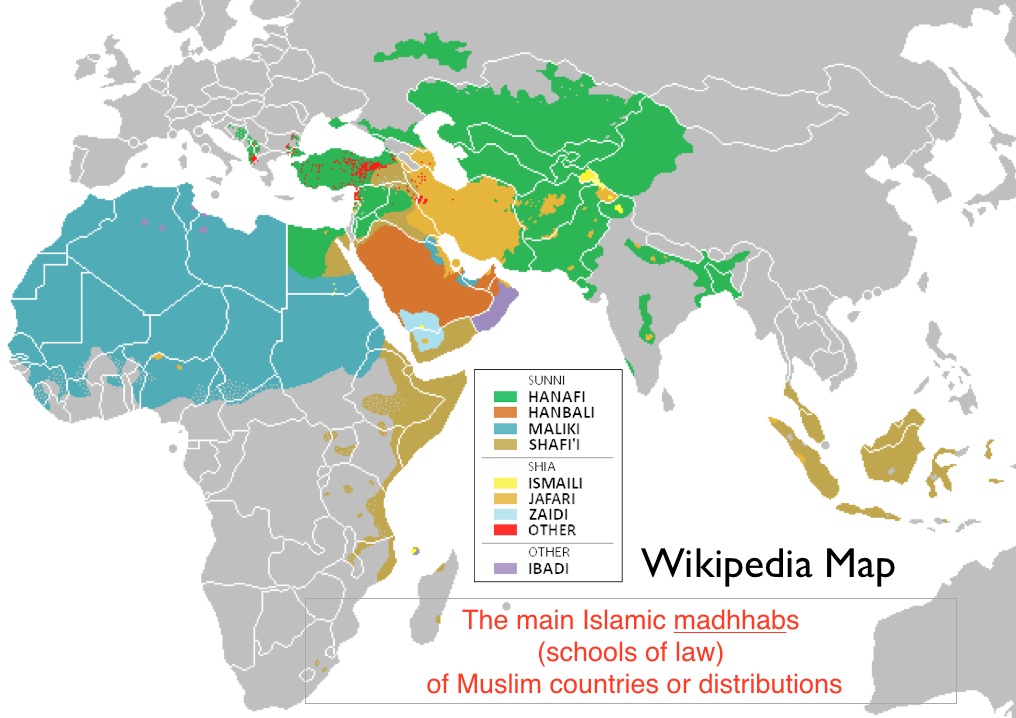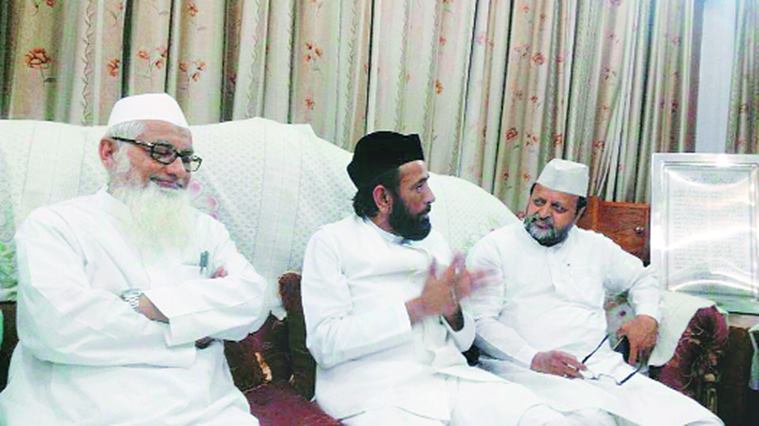An Unbiased View of Barelvi
Wiki Article
Top Guidelines Of Barelvi
Table of ContentsGetting The Barelvi To WorkNot known Details About Barelvi The Only Guide for BarelviExamine This Report on Barelvi
Radical Islamist groups in South Asia such as the Taliban are commonly classified as Wahhabis, coming from the austere, puritanical type of Islam institutionalised in Saudi Arabia. But while the connections between the Wahhabis and the Taliban are limited, the latter really come from a various branch of the confidence.Sunni Islam is separated right into 4 orthodox institutions of regulation (Madhhabs), each of which is complied with in distinctive components of the Muslim world. A variety of ceremonies and also prayer forms likewise vary among the colleges. As the map over indicates, Wahhabism, based in Saudi Arabia, is related to Hanbali regulation, the strictest form of Islamic jurisprudence.

" Sunni Muslims," Haqqani writes, have cast apart their hostility to Wahhabi groups, creating a multitude of standard Sunnis that accept Wahhabi political and also jihadi suggestions without always surrendering their ceremonies as well as routines." As is frequently noted, Saudi Arabian spiritual financing has helped break down the obstacles in between the 2 sects.
Get This Report on Barelvi
Mapping the 4 typical schools of Sunni Islamic law is fairly very easy, although the authors of the Wikipdia map published above should have commendation for doing a particularly good job. The distinctions that actually matter are not those of Madhhab, however instead are found among less official and much a lot more recent "movements" within Islamic idea and technique.The Deobandi motion is straightened with Wahhabism and developments a similarly severe, puritanical interpretation of Islam. The Barelvi movement, on the other hand, protects an extra typical South Oriental variation of the confidence centered on the practices of Sufi necromancy. In India as well as especially Pakistan, stress in between the two groups can be intense, occasionally bordering on open warfare.
As just recently reported in the, "When the Taliban took over Buner in April 2009, they initially besieged Pir Baba's temple. Taliban leader Fateh Khan claimed it was because the area was a hub of 'adultery and also idolatry.'" Therefore, several Sufi temples are now greatly protected by Pakistani protection forces.
One can, nevertheless, easily portray their area of beginning, as both motions are named for towns in north India: Deoband as well as Bareilli. Although extreme Deobandi teams are most very closely associated with Pakistan as well as Afghanistan, the movement's intellectual and spiritual heart is still the Indian city of Deoband. Its Darul Uloom Deoband is deemed to be the 2nd largest madrasah (spiritual college) in the Sunni Muslim world, complying with only Al-Ahzar in Cairo.
The Definitive Guide for Barelvi
Strong numbers are difficult to find, the majority of specialists maintain that Barelvis significantly out-number Deobandis not simply among Indian Muslims yet in Pakistan. In Pakistan, nonetheless, Deobandis have actually been progressing of late, and Barelvis pulling his response back. According to one estimate, "some 15 per cent of Pakistan's Sunni Muslims would consider themselves Deobandi, and some 60 percent remain in the Barelvi practice.Early Deobandi leaders were distressed by the triumph of British manifest destiny and English-language education, which they sought to deal with by cleansing their faith, stripping away mystical practices and other technologies that they considered as in contrast to the belief (Barelvi). One of the most hardline Deobandis pertained to relate to Barelvis, as well as Shiites, as non-Muslim opponents deserving of attack.
Deobandi reasoning is as well conventional to be patriotic, relating to the community of the faithful, not the contemporary nation-state, as the appropriate Quranic political vehicle. Many Deobandi scholars turned down the dividers of British India in 1947, favoring to seek the spread of Islam in an undivided India. The concept of Pakistan, furthermore, was originally accepted by Muslim teams abhored by the hardline Deobandis (Barelvi).
As an outcome, the Pakistani federal government significantly drifted in the direction of the harsh Deobandi movement. The connection, however, is a two-edged sword for contemporary Pakistan, as the Deobandi faithful ultimately have ridicule for nationwide identifications and also borders.
The Best Guide To Barelvi
look hereDoubters link it to terrorist organizations; the Taliban, after all, sprang out of Deobandi madrasahs in northeastern Pakistan, as did several various other violence-prone organizations. Shocking fatwas (religious rulings) do not aid its reputation (Barelvi). In May 2010, a decree that females can not function for incomes shocked mainstream Muslim opinion worldwide.

As Abedin writes: On the concern of supposed Wahabism I put it to Madrassi that numerous critics of the Deoband seminary claim that Deobandi ideas are just a little step far from full-blown Wahabism. In reaction the replacement Vice Chancellor makes a clear separation between the 2 institutions of thought, prior to adding that if we think about the Wahabis and also the Barelvis as 2 extremes, the Deobandis inhabit the centre ground in that continuum.
Report this wiki page